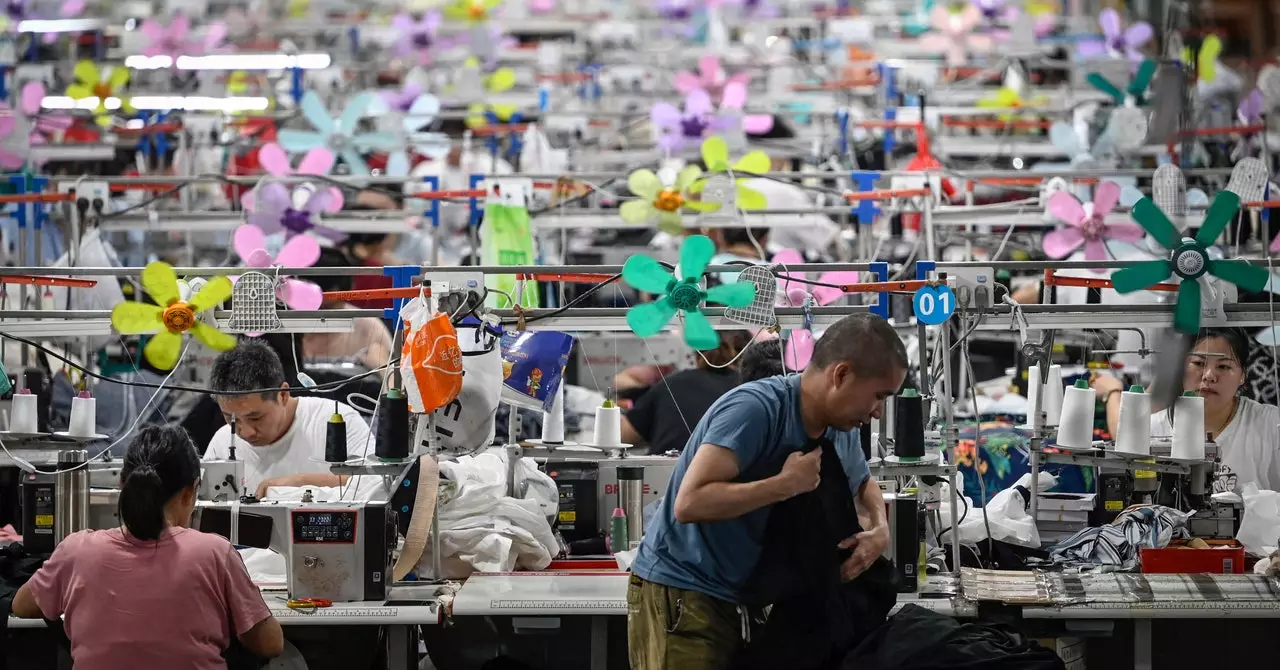In recent years, Shein has emerged as a dominant force in the realm of fast fashion, captivating consumers worldwide with its incredibly low prices and trendy offerings. The company’s reach spans over 150 countries, driven by a relentless supply chain designed to deliver clothing at record speeds. Fueled by influencers showcasing their “#sheinhaul” experiences on social media, Shein has amassed billions of views, fostering a culture of urgency among shoppers eager to acquire the latest styles. Yet, this astonishing growth raises critical questions about the environmental and ethical implications of such rapid consumption.
At the heart of Shein’s operational prowess is a sophisticated suite of artificial intelligence (AI) technologies that streamline everything from design to delivery. The company’s proprietary algorithms analyze customer preferences in real-time, allowing it to anticipate demand and produce garments at unprecedented speeds. As a result, Shein can introduce thousands of new items daily, with reports suggesting figures reaching 10,000 items—a staggering volume that is difficult to comprehend. However, this reliance on AI also reveals an inherent contradiction; while AI facilitates efficiency, it does not mitigate the environmental costs associated with such accelerated manufacturing processes.
Research indicates that Shein’s methods lead to a compounding effect on carbon emissions, as the company has seen an increase in its greenhouse gases—a troubling fact highlighted in its latest sustainability report. As consumers are increasingly attuned to sustainability issues, Shein faces mounting pressure to reconcile its business model with environmental responsibility. Advocates argue that the very technological advancements propelling Shein’s growth simultaneously exacerbate its carbon footprint.
Despite Shein’s public pledge to reduce carbon dioxide emissions by 25% by 2030 and achieve net-zero emissions by 2050, skepticism remains prevalent. An analysis of the company’s performance reported that Shein’s carbon emissions nearly doubled between 2022 and 2023, contradicting its sustainability commitments. Experts like Sage Lenier of Sustainable and Just Future argue that such figures are indicative of a deeper sustainability paradox: the ultra-fast fashion model is fundamentally at odds with long-term environmental goals.
Shein’s rapid turnover of products leads to extensive textile waste, significant microplastic pollution, and labor practices that raise serious ethical concerns. With the average garment priced around $10 and the sheer volume of items available for purchase, the temptation to indulge in disposable fashion persists, eroding any advances made toward sustainable practices. In the age of growing awareness and activism surrounding climate change, companies like Shein are being scrutinized more closely than ever before.
Shein is not alone in grappling with these challenges; it represents a broader trend within the fast-fashion industry that is beginning to show cracks under scrutiny. Consumers, especially younger generations like Gen Z, are increasingly aware of the repercussions of their shopping habits. While about 44% of Gen Zers in the U.S. report purchasing from Shein monthly, they also demand accountability and meaningful change from the brands they support.
With mounting evidence linking fast fashion practices to environmental degradation, the future of these companies hangs in the balance. The industry must adapt to evolving consumer values, which now prioritize sustainability and ethical production. The challenge, however, lies in reconciling the inherent contradictions between affordability and responsible practices.
As the fast-fashion landscape continues to evolve, it is crucial for companies like Shein to adopt more sustainable practices. This may involve exploiting technologies in ways that minimize environmental impact rather than maximizing production speed. Transparency in operations, genuine commitments to reducing carbon footprints, and addressing labor practices are integral to fostering a more responsible fashion industry.
While Shein’s rapid rise attests to the allure of fast fashion, it also serves as a cautionary tale about the consequences of prioritizing speed and profit over sustainability and ethical responsibility. For the industry to survive and thrive in a world increasingly concerned with climate change and social justice, significant changes must occur. The question remains: Will companies like Shein adapt, or will they risk being left behind in a shifting consumer landscape?


Leave a Reply